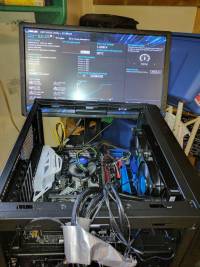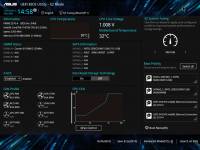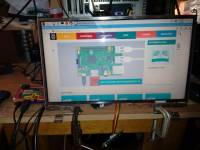This is an old revision of the document!
Way Way Back
In 2000 Evan Leibovitch proposed a meeting for some of Toronto's new users of GNU/Linux, dubbed Newtlug at the time; Evan had asked me for help with an inaugural meeting topic. At his suggestion I did an oral book review of the one I was reading at the time.
Imagine my surprise when I found a copy of that speaker dialogue via the wayback machine.
http://web.archive.org/web/20010723170926/http://tlug.ss.org/bookreview01.html
Images from the Frankenbench
Peter Hiscock gave me a couple of DOA laptops to hack around with. When my SO put the kybosh on reflowing solder in the kitchen oven, I recycled that LCD using a Raspberry Pi and an M.NT68676.2A(HDMI+DVI+VGA+Audio) LCD/LED Screen Controller Board.
Push Pull Cooling
Homeostatic cooling with a fluid cooled radiator/heat-sink requires a steady and constant airflow. Cycling forced air over a heated surface more quickly while it is under a thermal load, doesn't really help cooling cooling efficiency much. However a large volume of air at consistent velocity is more efficient.
That's the theory anyway. ![]()
First boots with the vendor supplied cpu cooler. Radiator and fans installed, now it's ready for switch over to fluid-cooling. The single cpu cooler revs at 1100 with only the bios loaded.

 This capture from the bios, after installing the pump unit on the cpu, shows all fans under 900 rpm. Its not quite accurate; both radiator fans are driven from the same single cpu fan connection.
This capture from the bios, after installing the pump unit on the cpu, shows all fans under 900 rpm. Its not quite accurate; both radiator fans are driven from the same single cpu fan connection.
Sure is quiet tho.
